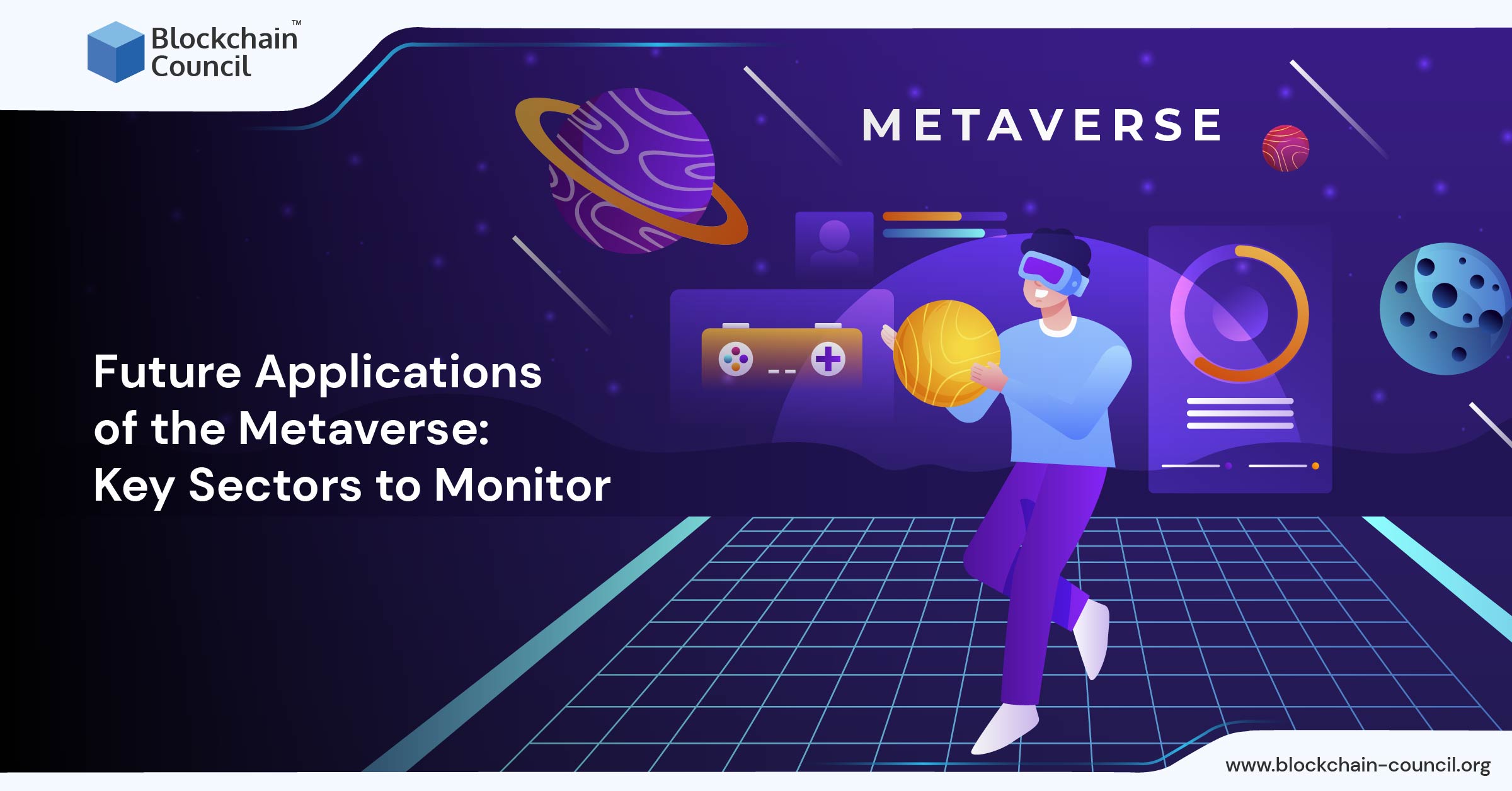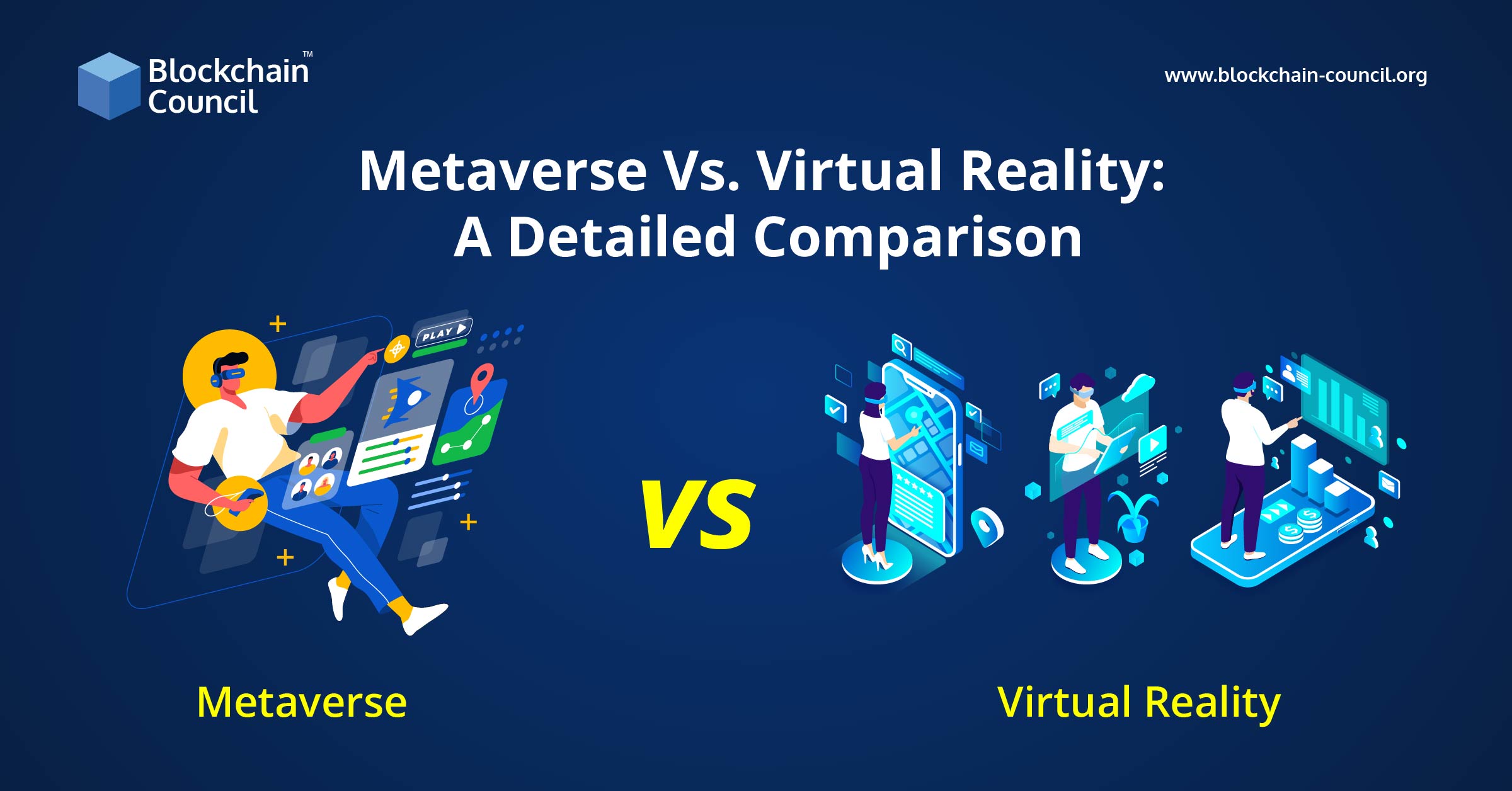
- Blockchain Council
- September 12, 2022
You can easily understand the power an ‘idea’ holds when you see that financial magnates and bigwigs of the industrial space are putting everything into building a cluster around it. Well, the ‘idea’ we are trying to stress upon here is ‘Metaverse Technology,’ which has recently become the hottest trend within the tech space. When Facebook rebranded itself to Meta, the technology got the much-needed blow to make its presence felt in the global tech industry, and Metaverse development gained pace.
While Metaverse has been in discussion for quite some years now, the concept garnered mainstream attention after the COVID-19 pandemic when human interactions became impossible, and technology was the only powerful solution for sustaining connections. Today, businesses, big or small, are switching to a hybrid model of work in which offline and online systems work interdependently to enhance the core capacities. With Metaverse, we enjoy access to a virtual world that mimics reality most innovatively.
Seeing the hidden potential of Metaverse technology, firms began to dig in more to discover new growth opportunities. Tech-savvies began experimenting with the technology to innovate products that solve the existing complications in the sector. Eventually, the Metaverse expert hub discovered the power of technology in connecting businesses with customers. It can play a significant role in helping brands interact seamlessly with their target customers in a real-like environment. Despite being virtual, Metaverse strives to replicate human interactions in the best way possible. Surprisingly, this opened doors for a new concept called ‘Conversational AI’ that allowed Metaverse users to enjoy real-like interactions with entities.
We will delve deeper into Conversational AI and its importance in Metaverse technology in this segment. However, before moving further, let’s learn Metaverse’s meaning and the role of Conversational AI in the sector. Let’s start:
What is Metaverse?
Metaverse is a network of 3D virtual worlds where users can expose themselves to an immersive, secure, and interactive digital environment. With a convergence of new-age technologies like blockchain, Augmented Reality, Virtual Reality, 5G, IoT, Spatial and Cloud Technology, and Artificial Intelligence, Metaverse speaks about a new way to meet, play games, chat, trade, and invest. It strives to support social and financial activities with a vision for a more liberal Internet. Often we hear about tech enthusiasts addressing Metaverse as the “Future of the Internet,” and this is true for more than one reason. There is no particular definition of Metaverse, which makes it a topic of open-ended discussion welcoming multidirectional views from experts.
The simulated digital ecosystem nurtures decentralization and digitalization to unlock new opportunities for creation and innovation. Metaverse is still in its nascent stage of development, so it would be too early to make strong predictions about its future. It will require several technologies, protocols, innovations, and enterprises to come together and lay the foundation of Metaverse technology. Also, there won’t be any period distinction like ‘Before and After Metaverse. Everything will happen gradually in a structured pattern as and when products and services will enter the market.
However, with big fishes like Mark Zuckerberg of Meta bragging about Metaverse openly, it shouldn’t be categorized as a mere’ market bubble.’ It is fair enough for companies and institutions to make efforts to understand the concept and explore its potential. According to the analysis report of Gartner, it is predicted that by 2026 nearly 25% of people will invest at least an hour in the Metaverse environment for work, education, shopping, entertainment, social interactions, etc. The present Internet is two-dimensional as we surf through it and scroll across it on our mobile screens. But, the Metaverse is 3-Dimensional. It will allow users to enjoy the real-life experience in its virtual world through VR and AR headsets or glasses. The junction of virtual networks will make people feel present in the setting they would like to explore. In addition, metaverse training programs help users learn in-depth about the field.
What is Conversational AI?
Conversational AI (CAI) is a subset of AI environments that facilitates users to interact with computer software and applications similarly to human interaction. In simple words, it is a voice assistant that builds communication links between humans and computers through speech or text. The technological tool strives to improve the infrastructure in which firms interact with their target customers. It is an umbrella term used to describe the simulated brainpower that allows machines to understand, process, and respond to human speech or text.
With its wide pool of growth opportunities, Metaverse leverages support for customer interaction channels that run within an organization. If we are to go by the speculations, then customer service is likely to emerge as virtual-first very soon. Surprisingly, if this happens, then Conversational AI will be high in demand across the globe. This is because the technology connects natural language processing with traditional software solutions like chatbots, voice assistants, or other interactive tools used by companies.
Role of Conversational AI in Metaverse
With the Metaverse technology engulfing the global industrial space, Conversational AI comes handy in support of its expansion. The tech solution can play an exclusive role in popularizing and strengthening the virtual ecosystems of Metaverse. Conversational AI can create AI-empowered virtual characters called avatars or digital humans to populate the virtual clusters within a Metaverse environment. Digital humans work as 3D versions of chatbots and voice assistants and help to respond to actions in the virtual world of Metaverse. These avatars will facilitate never-seen-before interactions and experiences for customers. They will be designed to understand a wide spectrum of human elements like speech, text, facial expressions, body language, physical interactions, and emotions.
Reports suggest that the speech and voice recognition industry is speculated to rise to approximately $22 billion by 2026 because of the widescale adoption by enterprises. This paves the way for the growth of Conversational AI as well. People are placing their big bets on Metaverse as they see the technology as a multicultural, multidirectional, multidimensional, and voice-first virtual cluster with a lot of growth potential. CAI is a perfect communication link between avatars and business entities within the Metaverse. Industrial realms such as hospitality and banking have become the first promoters of CAI as a tool for customer services. The list is likely to grow in the coming years.
The robust toolset of Conversational AI helps to create more sophisticated, user-friendly, and interactive virtual characters offering immersive experiences inside Metaverse. The digital avatars are likely to be put to a plethora of uses by firms to enhance customer support systems. For example, they can use them to guide customers in online shopping, resolve user queries, or help them use a service. Conversational AI facilitates making these machine-oriented services more interactive and immersive.
The virtual avatars can converse with the users, offer advice, make friendly talks, and offer emotional responses to them. Firms can use digital humans to reach out to new customers, increase sales, and provide support services to them, along with aid for recruitment and engagement with the employees. The human touch encourages people to connect and interact with them more openly and effortlessly. Metaverse is also marking a presence in the crypto domain. Firms are building Metaverse blockchain and Metaverse wallet solutions to unleash a new financial system for investors. Virtual humans can help investors to work well in metaverse blockchain channels by providing them with guidance and help.
Voice technology will be more preferred to than text as people would like to talk to them and share queries only to seek quick solutions. This will help to create frictionless interactions between brands and their customers. In addition, these tech-friends will support multilingual access for users. The conversational AI will smoothly run the translation process in seconds so that users speaking different languages from around the globe can use the same avatar in their preferred language.
Firms are willingly investing in creating digital humans packed with all the necessary skills and some over-the-top skills as well to offer an enriched social experience to their users. These avatars will populate the metaverse ecosystems and provide an exclusive experience to all. Apart from this, the use of multitasking will help participants to enjoy everything all at once. For instance, they can chalk out a take-out order while playing a game or chatting without leaving the Metaverse.
Use Case of CAI in Metaverse
Metaverse technology offers a digital/virtual version of the real-world where users can experience things that are quite difficult, expensive, or impossible to experience in the real setting. The technology helps brands to provide high-class services to their customers, which is not possible with real-world tools. Customer support is set to become an indispensable part of Metaverse, and so it is essential for firms to start exploring the potential of CAI in this regard.
Conversational AI can play an important role in digital wayfinding inside a Metaverse cluster. For example, one might find themselves in a block when they enter the virtual world setting for the first time. This could be an amusement park or a shopping mall. This is where a digital human can help the real human to sail through the complexities of the Metaverse. They can guide people in the virtual environment and serve as a friend all through the process of ticketing, snack selection, etc.
Conclusion
With Metaverse thriving as one of the most interesting spaces for exploration, it is likely to expand further very soon. The technology will grow multidimensionally and so will require a variety of protocols under its umbrella. Customer support will emerge as one of the top-most priorities for Metaverse expansion. This is where conversational AI will help to make Metaverse accessible to every person without any issue. A good CAI-empowered customer service system will link brands with their target users easily, providing them with high-end services round the clock. Furthermore, the digital avatars will use human emotions to interact with customers so as to build strong relationships with them, which will eventually help to promote business for firms. So, be ready to talk to a digital human in a few years when enjoying a shopping spree in a virtual Metaverse ecosystem.
If you are interested in cryptocurrencies and Metaverse, then you can choose a Metaverse Certification course by Blockchain Council to learn more about the industry. The platform has a wide range of crypto, blockchain technology, and Metaverse education certifications. The courses offer detailed subjective and practical knowledge about the sector.





































































 Guides
Guides News
News Blockchain
Blockchain Cryptocurrency
& Digital Assets
Cryptocurrency
& Digital Assets Web3
Web3 Metaverse & NFTs
Metaverse & NFTs
